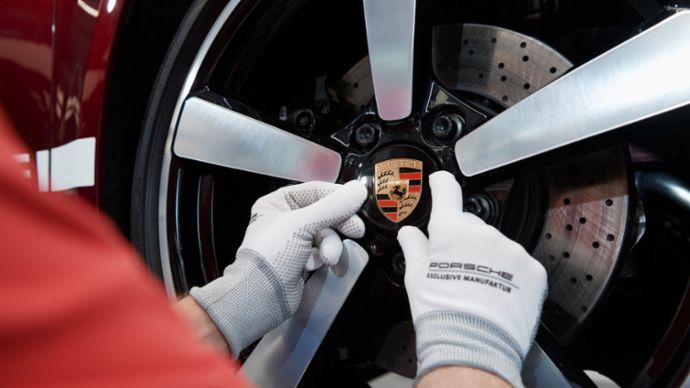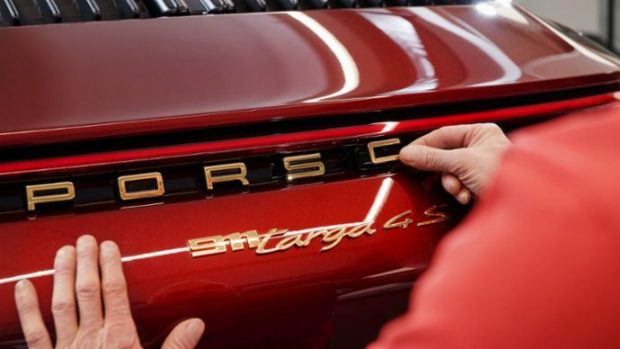The history of the Porsche Crest. Focus on horsepower
While the Porsche logo had already been used on the brand’s first vehicle in 1948, the Porsche Crest was not created until 1952.
In March 1951, Porsche launched a competition for German art academies, offering the generous sum of 1,000 Deutsche Mark for the creation of a company logo. However, none of the designs met the management’s expectations. Towards the end of 1951, Ferry Porsche visited New York and was asked for a logo by the American importer Max Hoffman, with the result that work on a logo also started internally within the company.
In early 1952, Franz Xaver Reimspieß, a highly talented designer who had already designed the Volkswagen logo in 1936, created a fantasy crest. It symbolizes the roots of the company and at the same time illustrates the quality and dynamics of its products, with a prancing horse taken from the seal of the city of Stuttgart depicted within the contours of a golden shield. Together with the name of Stuttgart above it, a clear commitment is made to the home of the company, while the surrounding red and black state colors and the stylized antlers are taken from the traditional crest of Württemberg-Hohenzollern. Finally, the Porsche logo forms a protective arch over the entire design.
After registration with the German Patent Office, the Porsche Crest was first seen on the horn button at the end of 1952, before being incorporated into the characteristic hood handle of the Porsche 356 Speedster in November 1954. As of 1959, it also adorned the hubcaps of the Zuffenhausen sports cars and, since then, every Porsche vehicle has featured this seal of quality on its hood.
In the meantime, the copyright-protected Porsche Crest has become one of the most famous trademarks in the world and may only be used commercially with the express permission of Porsche AG.

The Porsche Classic crests: true to the original design and with proven quality
The original Porsche Crest is available from Porsche Classic for a wide range of historic models and is manufactured with special tools according to original drawings. As in period, it is gold-plated and the application of its colors and enameling are performed by hand. Unlike today’s crest, the Porsche logo at that time was only embossed and not also finished in black. In addition, the red color used to tend more towards orange, as in the state colors of Württemberg-Hohenzollern.
In order to meet high-quality standards, the new release of the classic Porsche crest was subjected to extensive testing, including a climatic cycle test carried out at the Porsche Research and Development Centre in Weissach.
Over the years, the Porsche Crest has undergone careful design changes. The crests available through Porsche Classic are differentiated as follows:
- From 1954 for the Porsche 356, and from 1964 for the 911 also in another size. For design details, please see Page One.
- From 1974, the Porsche logo shines in gold; Stuttgart is embossed on a recessed background and the color in the Porsche Crest radiates a red-transparent glow.
- From 1994: the Porsche logo is characterized by slim Black letters. the word Stuttgart is recessed; the Porsche Crest is red-transparent and the horse is portrayed elegantly.
Gold-colored logos: a distinguishing feature of all Heritage Design models
With the gold-colored logos on the rear and on the Targa bar, Porsche is recalling another historic design feature. While the first Porsche models still carried silver-colored logos, they were gold-colored on the rear from the mid-1950s onwards, creating an exclusive appearance.
With the introduction of the Porsche 912 in 1965 and the Porsche 911 T in 1968, the gold-colored logos were gradually replaced by silver and black anodized lettering.
However, the gold-colored logos are now making a return as a distinguishing feature that will embellish all future Heritage Design models.

